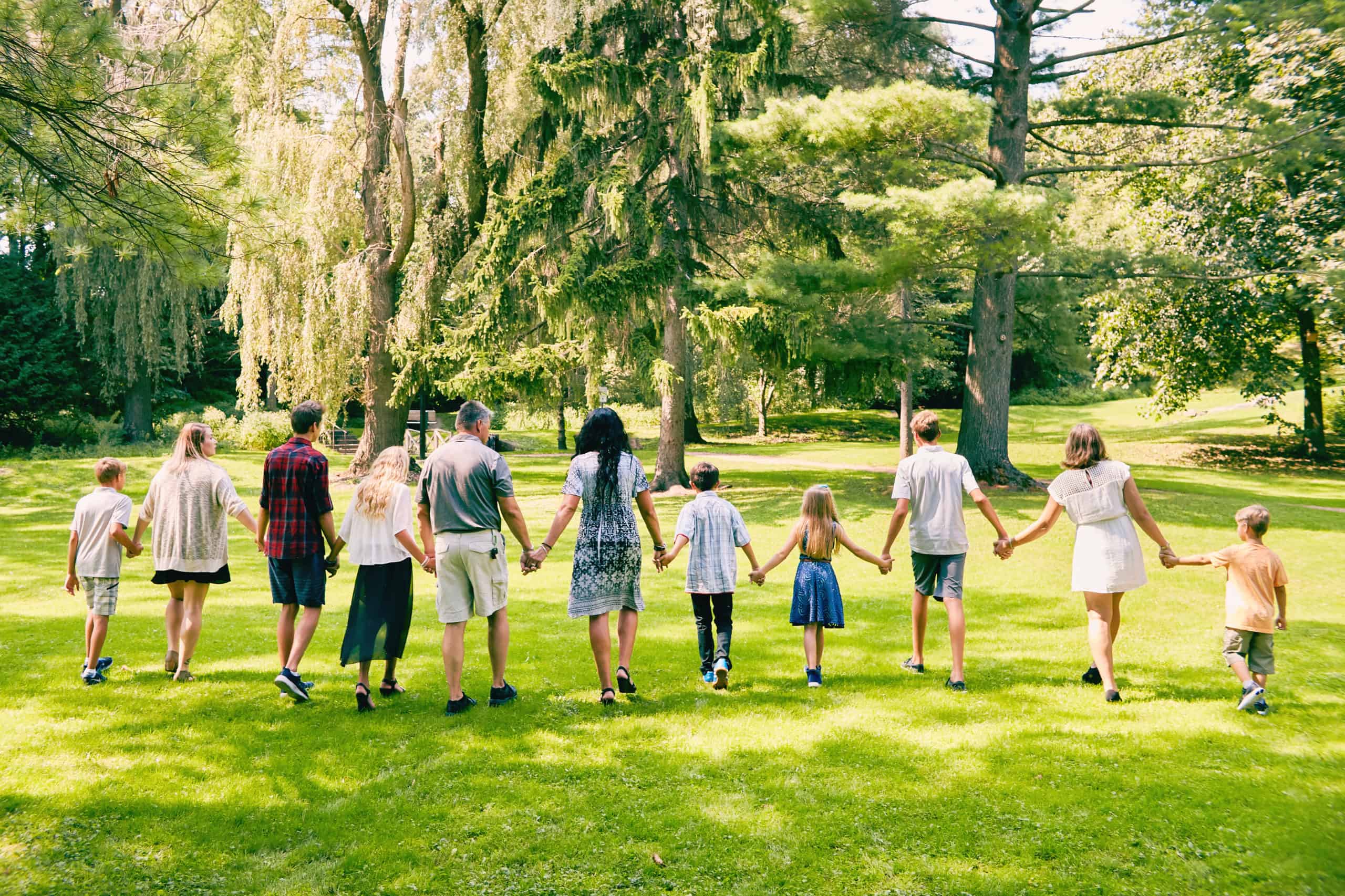In May 2022, thousands of posts flooded social media sharing the reality of foster care, both the highs and lows. May is National Foster Care Month. To bring awareness to the month, a well-known foster care advocate and foster mom, Jamie Finn, created a list of 31 writing prompts for others to use to share their foster care journeys. The prompts included topics such as reunification, going to court, and saying goodbye.
KC, a foster and adoptive mother, was one of many who participated in the writing challenge to share the reality of foster care. Over the course of four weeks, KC shared powerful stories about what it means to be a foster parent. Her honesty provides others with a look into the reality of both the beauty and brokenness of foster care and adoption.
Stumbling Into Foster Care
Like many foster parents, KC’s journey to becoming involved in foster care was nothing like she expected. She shares the story in one of her social media posts for National Foster Care Month.
KC writes, “We stumbled into foster care. We heard too many stories, and we wanted to love a child forever and not ‘give them away.’ We wanted to add to our family with adoption, and foster care was just too unknown.”
Each state runs its foster care system differently. In California, KC knew about programs designed to match prospective adoptive families with a child in foster care who is available for adoption. In those situations, the likelihood of a child finding permanency with the prospective adoptive family was high. However, in Hawaii, where KC and her family lived, they found no similar programs.
They were told not to get involved with foster care with the goal of adoption because it was unlikely: only about 15% of children in foster care in Hawaii exit the system through adoption. The odds felt too risky. So they “shelved” the idea for a while.
But everything changed when a friend said to KC, “That’s one in six kids!”
KC describes the effect of that revelation in her post. She writes, “The lights went on. We needed that change in perspective. We could have the opportunity to help several kids before one found [their] forever home.”
The First Class
So KC and her husband took their first step to get involved in foster care. They began by filling out an application and attending a training class.

After the first class, KC and her husband asked themselves, “How could we NOT do foster care?! How could we not be the answer?!”
In describing her family’s foster care journey, KC writes, “So that’s how we got here. Baby steps. Just one tentative step in front of the other.”
Now, their family is a mixture of biological children, adopted children, and children in foster care. “We can’t imagine life any different,” KC writes. “Oh, and by the time we adopted our first child, we had seven children come in and out of our home. Crazy how God works.”
The Reality of Trauma in Foster Care
On day six of the social media challenge, KC discussed the impact of trauma on a child in foster care. She wrote about a child who returned to them after a failed reunification. The child would eventually become their adopted son. But at such a young age, this child had experienced more trauma than most adults ever will.
KC writes, “Fortunately, those first few days and months didn’t stay in his cognitive memories. He doesn’t remember not living with us or [not] loving us. But the trauma didn’t go anywhere. It’s still there.”

She continues, “It comes out when he stubs his toe, and he falls apart. It comes out when he emotionally removes himself from relationships. It comes out when he is worried about everyone else but himself. The trauma of his first years runs deep in his nervous system.”
All children in foster care have experienced trauma. This is the unfortunate reality of foster care. Even an infant or toddler, who may have no memory of abuse or neglect, carry the effects of trauma within their body. The effects of trauma can be challenging for foster parents and other children in the home.
Looking back, KC writes, “Sure, there are (lots of) daily hurdles, but to have never opened our arms to trauma (his and eventually ours), we would have missed out on one of God’s biggest blessings to us.”
KC explains, “While the trauma is very real, God is bigger. And He’s got BIG plans for our boy that we get to be a part of.”
Healing and restoration through Christ is also a reality of foster care.
The Transformational Impact of Support
On day ten of the challenge, KC wrote about community. “When we started this foster care journey in 2015, we knew no one that did it,” she shares.
KC and her family managed alright in the beginning with periodic support. They were thrilled anytime they received a meal or had a chance for a date night. But things changed for the better when they got plugged in with a Youth With a Mission (YWAM) community.
Suddenly, their entire family was receiving support. KC and her husband took advantage of respite care once a week, where the caregivers were compassionate and equipped to care for children from hard places. And their children already in the home had new opportunities to socialize with other children from foster and adoptive families. According to KC, the wrap-around support they received was “transformational.”
Practical Examples of Supporting Foster Families
YWAM students would come to help KC with whatever projects she needed to be done, such as weeding, organizing Tupperware, and painting. But the impact of this support went far beyond the project itself. “They took things off my list to give me time and energy to be with my kids.”

She also writes, “They helped babysit when I was working, and on nights off, they encouraged me to still drop them off to go spend some time by myself. How selfish did I feel?! Yet, how necessary it was for me to feel whole.”
Because KC and her family became involved in a supportive community, they met other foster families who understood the challenges and rewards of fostering.
KC describes the importance of community and support like this: “Feeling seen, receiving help for the mundane, [and having] time away was and still is necessary to not burn out in foster care. While it may still be hard for me to accept help, [that] is what makes us say ‘yes’ to the next call.”
How to Get Involved in Other Ways
In one of her posts, KC writes, “We felt the tug years before we got licensed.” She understands firsthand that God may not call everyone to foster or adopt in every season of life. But she does know the importance of answering the call if and when it comes.
For those who want to make a difference in other ways, KC suggests supporting a foster or adoptive family. She lists several ideas for how to support: “Weekly and monthly drop-offs. Meals delivered. Babysitting. Rides. Shopping. Baby showers. Yard work.”
“My wish for every city in America is to have support for foster families,” KC writes. “With support in place, it makes saying ‘yes’ easy.”
KC encourages support systems to connect with local organizations and churches to see how they can partner to make a difference. College students, grandparents, and families are just some of the people who can come alongside foster and adoptive families.
Finally, KC writes about the importance of consistency. “Continue to reach out again and again,” she says. “I may be too prideful to accept help, but when it comes, I am knocked down with humble gratitude.”
Learn More and Take Action
To learn more about how to take your first steps and engage with foster care and adoption, visit WaitNoMore.org.




















